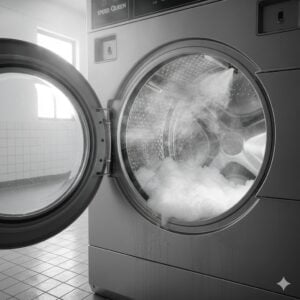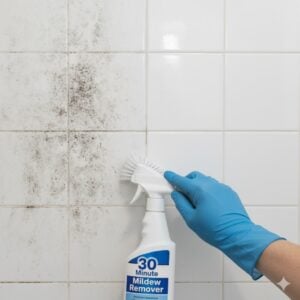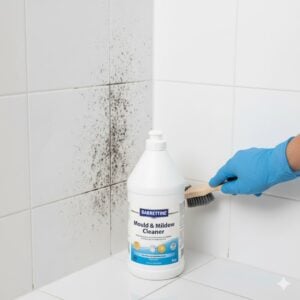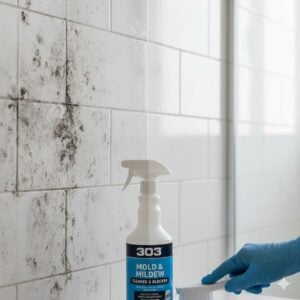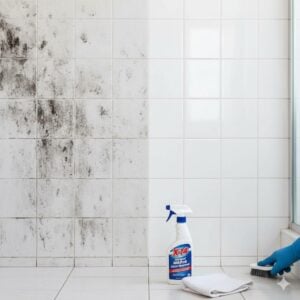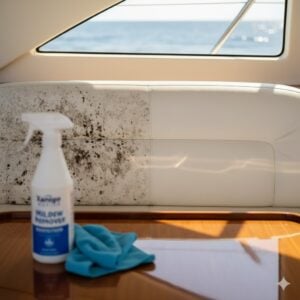Hello, dear readers! Today, we’re diving into the crucial topic of attic mold remediation costs in the UAE, an issue that affects many households and businesses alike. Understanding the financial aspects of tackling mold in your attic is paramount for maintaining a healthy, safe environment. Mold can cause a variety of health issues and structural damage if left unaddressed. By the end of this guide, you’ll be well-informed about what to expect budget-wise and why investing in professional remediation services is a smart choice. Let’s unravel the mysteries of mold cleanup costs together!
Table of Contents
Toggle#1 Identifying Attic Mold
Identifying attic mold early can save you not only a lot of money but also protect your health and property from serious damage. Mold in the attic typically thrives due to excess moisture, which can come from leaks, poor ventilation, or even daily activities that increase humidity levels in your home. Recognizing the signs of attic mold is the first critical step in the remediation process.
The first sign to look out for is visible growth. Mold can appear as spots or streaks in various colors, including black, white, green, or yellow, on wooden beams, walls, or insulation. Even if you don’t see mold, a musty smell in the attic is a strong indicator of its presence. This odor is distinctive and usually the result of mold growing in less visible areas.
Another tell-tale sign is water damage. If you notice any water stains or discoloration on the attic’s ceiling, walls, or floor, it’s likely that mold isn’t far behind. Moisture problems can stem from roof leaks, condensation from air conditioning units, or improperly vented bathrooms and kitchens.
Physical symptoms can also be a sign of attic mold. If you or your family members experience sudden allergies, respiratory issues, or other health problems when at home, it could be due to mold exposure. Mold spores are known to aggravate asthma and allergy symptoms, emphasizing the importance of a clean attic environment.
Checking for poor ventilation is also crucial. An attic that’s not properly ventilated will trap heat and moisture, creating an ideal breeding ground for mold. Look for blocked soffit vents, insufficient ridge vents, or a lack of attic fans. Additionally, insulation soaked with water or covered in mold needs immediate attention, as it can hold moisture for extended periods, promoting mold growth.
Lastly, rust on nails or other metal components in the attic can indicate excess moisture, which could mean mold is present even if you haven’t spotted it directly. Rust forms when metal is exposed to water and oxygen, often a byproduct of the same conditions that favor mold growth.
Identifying these signs early and accurately is crucial for tackling mold issues before they escalate. Once you’ve spotted any of these signs, it’s important to move quickly to assess and address the mold issue, safeguarding your home’s structural integrity and the health of its occupants.
#2 Factors Affecting Remediation Costs
Several factors influence the cost of attic mold remediation, each contributing to the overall expense you might incur. Understanding these elements is crucial for homeowners to prepare financially for the remediation process.
The size of the mold-infested area is a primary determinant of cost. A larger area requires more labor, materials, and time to clean, leading to higher charges. Remediation projects are often priced per square foot, so the extent of the mold growth can significantly impact the total cost.
The severity of the mold infestation also plays a critical role. Surface mold is easier and less costly to remove than mold that has penetrated deeper into structural elements. If mold has infiltrated insulation, drywall, or wooden beams, these materials may need to be replaced, adding to the expense. The type of mold can affect the cost as well; some strains are more hazardous and require specialized removal techniques.
Accessibility of the attic impacts the remediation cost. Attics with easy access allow for quicker and more efficient work, reducing labor costs. Conversely, cramped or hard-to-reach spaces can complicate the removal process, necessitating specialized equipment or extra manpower, thereby increasing the cost.
The need for additional services, such as repairing the moisture source that led to mold growth, can also affect the overall price. Fixing roof leaks, improving attic ventilation, or installing vapor barriers are common repairs associated with mold remediation. These preventative measures are essential to avoid future mold issues but will add to the project’s total cost.
Environmental safety measures may be required, especially if the mold is of a hazardous variety. The use of containment areas, air scrubbers, and personal protective equipment to prevent mold spore dispersion can add to the expense, ensuring the safety of the occupants and the remediation team.
Lastly, the geographic location of the property can influence the cost. Remediation services in areas with high living costs or remote locations may charge more due to increased labor rates and transportation fees.
These factors collectively determine the overall cost of attic mold remediation. Homeowners should consider each aspect when budgeting for mold removal projects, ensuring they are prepared for the financial investment required to safeguard their homes and health.
#3 DIY Vs. Professional Remediation
When considering attic mold remediation, homeowners are often faced with the decision between undertaking the project themselves (DIY) or hiring professionals. Each approach has its merits and pitfalls, and understanding these can help in making an informed choice.
DIY attic mold removal might seem cost-effective initially, as it ostensibly eliminates labor costs. For minor mold issues, such as small, isolated areas affected by mold, a DIY approach can be sufficient. Homeowners might use over-the-counter mold removal products, protective gear, and follow online guides to address the problem. However, this approach is only advisable if the mold coverage is less than 10 square feet, the mold is on the surface level, and there’s no toxic black mold present.
On the flip side, professional remediation services come with higher upfront costs but offer comprehensive solutions that address not just the mold itself, but also its underlying causes. Professionals are equipped to handle extensive mold infestations, including those involving toxic varieties that pose health risks. They possess the necessary tools, protective equipment, and expertise to ensure mold is thoroughly removed. Importantly, professional services often include measures to prevent mold recurrence, such as moisture control solutions and recommendations for attic ventilation improvements.
The safety factor significantly tilts the balance in favor of professional remediation. Mold exposure can lead to health issues, especially when dealing with toxic strains. Professionals are trained to safely contain and remove mold, minimizing the risk of mold spore dissemination throughout the home.
Another consideration is the time and effort required for mold removal. DIY projects can be time-consuming and labor-intensive, particularly for individuals who are not experienced. Professionals can complete the job more efficiently, thanks to their expertise and specialized equipment.
The warranty provided by professional services is a critical advantage. Many companies offer guarantees on their work, providing homeowners peace of mind that if the mold returns, the issue will be addressed.
Lastly, the complexity of mold removal should not be underestimated. Identifying the full extent of mold growth, safely removing contaminated materials, and ensuring the attic is restored to a safe condition are tasks that require a level of expertise typically beyond the average homeowner’s skill set.
Choosing between DIY and professional attic mold remediation depends on the scope of the mold issue, the homeowner’s expertise and comfort with DIY projects, and the value placed on safety and guarantees. While DIY may be suitable for minor issues, professional remediation offers a comprehensive, safe, and efficient solution for more serious mold infestations.
#4 The Process of Professional Attic Mold Remediation
The process of professional attic mold remediation is a meticulous and comprehensive approach that ensures not only the removal of mold but also the restoration of the attic to a safe and healthy environment. Understanding this process can help homeowners appreciate the value and importance of professional intervention in cases of mold infestation.
Initially, the remediation team will conduct a thorough inspection to assess the extent of the mold problem and identify its source. This step is crucial for developing an effective remediation plan. Professionals use tools like moisture meters and thermal imaging cameras to detect hidden moisture issues that could be contributing to mold growth.
Following the assessment, the area will be contained to prevent the spread of mold spores during the cleanup process. Containment usually involves sealing off the affected area with plastic sheeting and using negative air pressure machines to filter out contaminated air.
The next step involves air filtration, which helps remove airborne mold spores from the attic. Professionals use HEPA (High-Efficiency Particulate Air) filters and air scrubbers to purify the air and ensure that mold spores do not spread to other parts of the home during the remediation process.
Mold removal is the core of the remediation process. This involves physically removing moldy materials, which may include insulation, drywall, or wooden beams. Non-porous materials can often be cleaned and disinfected, but porous materials with deep mold penetration typically need to be discarded and replaced.
After removing the mold, the area will be thoroughly cleaned and disinfected. This step includes using antimicrobial treatments to eliminate any remaining mold spores and prevent future growth. Surfaces are also vacuumed with HEPA vacuums to ensure the removal of all mold and spores.
Finally, the remediation process includes repairing or addressing the moisture source that initially led to mold growth. This might involve fixing roof leaks, improving attic ventilation, or installing vapor barriers. Ensuring the attic remains dry is essential to prevent mold recurrence.
Throughout the process, professionals take care to protect themselves and the home’s inhabitants by using personal protective equipment (PPE) and adhering to strict safety protocols.
This detailed approach to attic mold remediation highlights the thoroughness and expertise required to effectively address mold issues. Professional remediation not only removes mold but also addresses its root causes, ensuring a long-term solution to this potentially hazardous problem.
#5 Cost Components of Mold Remediation
Understanding the cost components of attic mold remediation is essential for homeowners to prepare financially for the process. These components include labor, materials, and equipment, each varying in cost depending on the scope and severity of the mold infestation.
Labor costs constitute a significant portion of the total remediation expense. These costs are influenced by the size of the affected area, the complexity of the mold removal, and the level of expertise required. Mold remediation is labor-intensive, often requiring several technicians to work multiple days to remove mold safely and effectively.
Materials used in the remediation process include cleaning agents, disinfectants, and replacement materials for any structural components removed during the process, such as insulation or drywall. The type and quantity of materials needed can significantly affect the overall cost. For example, specialized antimicrobial and antifungal treatments may be necessary for certain types of mold, which can be more expensive than standard cleaning solutions.
Equipment costs are another important consideration. Professional remediation companies use high-efficiency particulate air (HEPA) vacuums, air scrubbers, and negative air machines to contain and remove mold spores from the air. These machines are essential for preventing the spread of mold to other parts of the home during the remediation process. The use of personal protective equipment (PPE) and safety measures to protect the remediation team also contributes to the equipment costs.
Additionally, the severity of the mold infestation impacts the extent of demolition and reconstruction required. In cases where mold has penetrated deeply into structural elements, more extensive demolition may be necessary, followed by reconstruction. This can significantly increase both labor and materials costs.
Environmental testing and monitoring before and after remediation add to the overall cost. Professional mold remediation projects often include air and surface sampling to confirm the type of mold present and ensure that the remediation process has successfully removed all mold spores from the environment.
In summary, the cost of attic mold remediation is influenced by a variety of factors, including labor, materials, and equipment. Understanding these components helps homeowners prepare for the financial aspect of mold removal and ensures transparency in the remediation process.
#6 How to Save Costs Without Compromising Quality
Saving on attic mold remediation costs without compromising the quality and effectiveness of the treatment is a priority for many homeowners. There are several strategies that can be employed to manage expenses while ensuring your attic remains free from mold infestations.
Firstly, early detection and treatment of mold can significantly reduce remediation costs. Smaller, more contained mold issues are less expensive to address than widespread infestations. Regularly inspecting your attic for signs of moisture, water damage, or visible mold can help catch problems early. Pay special attention to areas around vents, chimneys, and roof joints where leaks are more likely to occur.
Implementing preventive measures can also lead to long-term savings. Ensuring your attic has adequate ventilation is crucial in preventing moisture buildup that encourages mold growth. Installing or improving existing ventilation systems, such as ridge vents, soffit vents, and attic fans, can help regulate moisture levels. Additionally, addressing any roof leaks or insulation issues promptly can prevent water from seeping into the attic and creating a hospitable environment for mold.
Another cost-saving strategy is to compare quotes from multiple mold remediation professionals. Not all services are priced equally, and obtaining several estimates can help you find the best value. However, it’s important to ensure that lower costs do not equate to lower quality. Verify the credentials, experience, and customer reviews of any service provider before making a decision.
DIY solutions for minor mold problems can offer immediate cost savings but proceed with caution. If you have the necessary knowledge and skills, you might tackle small-scale mold issues using over-the-counter mold removal products. Ensure you wear appropriate protective gear and follow safety guidelines to avoid health risks. However, for larger infestations or if mold is located in hard-to-reach areas, professional remediation is strongly advised.
Lastly, maintaining a clean and dry attic can prevent the recurrence of mold, eliminating the need for future remediation efforts. Regular cleaning, decluttering, and inspecting for potential moisture sources can keep your attic in good condition and deter mold growth.
By adopting these strategies, homeowners can manage attic mold remediation costs without sacrificing the safety and integrity of their homes. Early detection, preventive maintenance, informed hiring, and proper attic care are key to controlling expenses while ensuring a healthy, mold-free environment.
#7 Understanding Warranty and Post-Remediation Support
Understanding warranty and post-remediation support is a critical aspect of the attic mold remediation process. These elements provide homeowners with peace of mind and assurance that the investment in mold remediation will have lasting benefits. It’s important to know what to look for in terms of warranty offerings and the extent of support after the remediation work is completed.
A warranty for mold remediation services often covers the effectiveness of the mold removal for a specified period. This means if mold returns in the treated area within the warranty period, the service provider will address the recurrence at no additional cost to the homeowner. The length and terms of these warranties can vary significantly between companies, so it’s crucial to understand what is explicitly covered. Some warranties may only cover the labor, while others might include materials, and some have limitations based on the cause of mold regrowth, such as new water damage from an unrelated issue.
Post-remediation support encompasses the services provided after the initial mold removal, aiming to prevent future mold problems. This support can include follow-up inspections, air quality testing to ensure mold spore levels in the home are safe, and further advice on maintaining a mold-free environment. Companies might also offer guidance on fixing underlying issues that contribute to mold growth, such as poor attic ventilation or leaks, as part of their support.
When selecting a mold remediation service, inquire about the specifics of their warranty and post-remediation support. Ask questions like how long the warranty lasts, what it covers, and under what conditions it applies. Similarly, ask for details about what kind of support you can expect after the work is done, including any costs that might be involved for follow-up services.
Homeowners should also perform their due diligence by reviewing the service agreement and warranty documentation carefully before signing. Understanding these documents can help avoid any surprises if you need to claim the warranty or require post-remediation support.
By being informed about warranty and support options, homeowners can make more confident decisions when hiring mold remediation services. This knowledge ensures that the investment in attic mold remediation provides not just immediate relief but also long-term protection against mold recurrences, safeguarding both the home’s structure and the health of its occupants.
Why Bio On is Your Go-To Solution Attic Mold Remediation Costs
Bio On stands as your premier solution for attic mold remediation, combining unparalleled expertise with state-of-the-art technology. With a deep understanding of the unique challenges presented by mold in the UAE’s climate, Bio On offers a comprehensive approach to mold removal that addresses both the symptoms and the source of the problem. The team’s proficiency in the latest remediation techniques ensures effective and efficient mold elimination, prioritizing your health and safety. Beyond immediate remediation, Bio On provides enduring solutions through preventive measures and education, helping you maintain a mold-free environment. The dedication to customer satisfaction is evident in the round-the-clock availability for consultation, ensuring support is always just a click away. Choose Bio On for a healthier home today.
Conclusion
In summary, tackling attic mold remediation effectively requires understanding its signs, factors influencing costs, the balance between DIY and professional approaches, and the comprehensive steps involved in professional remediation. Additionally, grasping the cost components, strategies for cost management, and the significance of warranties and post-remediation support are essential for a lasting solution. Bio On exemplifies the ideal partner in this journey, offering expertise, advanced solutions, and dedicated support. For those facing mold challenges or seeking preventive advice, reaching out to Bio On through the WhatsApp consultation button ensures access to free, expert guidance tailored to your specific needs.








